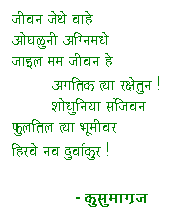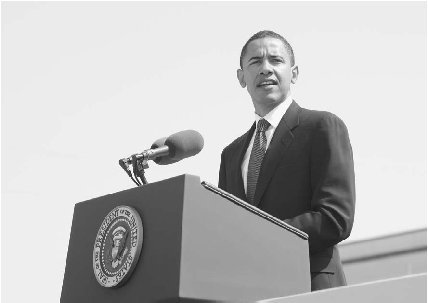Chennai: Yuvraj Singh smashed his maiden World Cup century and took two wickets as India crushed West Indies by 80 runs in their last Group B league match to set up a quarter-final clash against defending champions Australia.

Fast bowler Ravi Rampaul took five for 51 to start the slide as India lost seven wickets for 50 runs in 7.4 overs. India skittled out the Caribbean side for 188 with seven overs to spare as the spinners did an outstanding job.
Like India, West Indies too suffered a batting collapse following a strong start as they lost last seven wickets for just 34 runs at the M A Chidambaram Stadium. Zaheer Khan (3/26) was the most successful Indian bowler with three wickets while Yuvraj (2/18) and R Ashwin (2/41) took two wickets apiece.
It was not a flourishing but still a decent start to West Indies chase with Devon Smith (81) playing the sheet anchor by sharing three good partnerships with the top order batsmen. He raised quick 34 runs with Kirk Edwards for the first wicket, then stitched a 57-run stand with Darren Bravo and followed it up with 63 run partnership for the third wicket with Ramnaresh Sarwan (39).
Smith was taking it away from the Indians as West Indies were placed comfortable at 154 for two in the 31st over but once Zaheer Khan bowled Smith, the Caribbeans lost wickets in a heap. Harbhajan sent back hard-hitting Keiron Pollard (1) and Yuvraj had Devon Smith (2) stumped by Dhoni. That brought skipper Darren Sammy on to the crease but threw his wicket by running himself out, thanks to a terrible mix up with Sarwan.
Yuvraj struck for the second time when he had Andre Russell (zero) caught by Yusuf Pathan at point. Zaheer ended all Windies hopes when he scalped Sarwan. It was Ashwin, playing his first game in the tournament, who handed India its first breakthrough by trapping Edwards with his carrom ball.
The umpire had initially turned down the appeal but the the decision had to be overturned after the Indians asked for a review, which went in their favour. Smith pulled Harbhajan Singh for a four and Bravo hit Ashwin for a six and a four as the duo was quick to wrest the momentum back from the Indians.
As the wicket was helping spinners, Indian captain M S Dhoni introduced Suresh Raina, who responded with the wicket of dangerous looking Bravo in his very first over. Smith was going great on the other end as he raised his half-century with a single off Raina but could not help his his side win.
They will play Pakistan in their quarter-final on Wednesday in Mirpur, Bangaldesh.

The introduction of fast bowler Andre Russell brought some control but it was Rampaul again who gave West Indies the second breakthrough with Gambhir top-edging to the wicketkeeper while trying to slash a delivery. Kohli fell to Rampaul in the 33rd over but India were still looking strong to reach near 300-run mark at 212 for three after the 40th over before the batsmen starte to perish in self-destruction manner.
Dhoni, who looked set for a substantial score, triggered the collapse as he stepped out of the track to hoist a Devendra Bishoo delivery only to be beaten and stumped-out. Dhoni's dismissal led to a competition to follow him at the pavilion among his colleagues as five wickets fell for 28 runs as Rampaul returned to shuffle out India's tailenders.
Suresh Raina followed his skipper two overs later caught by Rampaul off Sammy. Yusuf Pathan continued his poor run in the tournament as he was out for just 11 in the 47th over. Harbhajan Singh (3), Zaheer Khan (5) and Munaf Patel (1) could not contribute much as each one of them fell in successive overs as India folded for 268 in 49.1 overs.

Chennai: India skipper Mahendra Singh Dhoni admitted that losing quick wickets was still a concern but said his team was gradually improving and will be at its best against Australia in the World Cup quarterfinals in Ahmedabad on Thursday.
India, who had lost nine wickets for just 29 runs against South Africa in their last outing, slipped from 218 for three to 268 all out.
"It (losing wickets) is a concern. But there is a gradual improvement (from seven for 29 to seven for 50) I am sure we will be at our best in the quarters. That's the positive I will take out of this," Dhoni said after India beat West Indies by 80 runs here.
Dhoni said the turning point of the match was the wicket of opener Devon Smith, who was dismissed by pacer Zaheer Khan in the 31st over to trigger a collapse.
"The game really changed once Zaheer gave us the breakthrough, until then Devon was batting really well. After that we could put pressure on both sides, and got more wickets than we needed and seize the game in the end," Dhoni said.
Asked about their quarterfinal match against Australia, Dhoni said they are focusing on the preparation rather than thinking about the result.
"Australia are a very strong side and very expressive on the field. But it's about how we prepare. Preparation is very important and we are just thinking about that particular day and match rather than think about the result," he said.
"Being in the present is a better option that thinking of the past or worrying about the future," he added.
Man of the Match Yuvraj Singh, who battled stomach cramps to score 113 runs and took two crucial wickets, said he was happy with the way he was middling the ball.
"It's been good, I went in and was middling the ball, so happy with the way it went. When you lose early wickets, you need a partnership going. Me and Virat took us to 220, very happy with the way it went," he said.
"I was getting stomach cramps since morning, but I wanted to bat till the end. I am Very happy with the team effort today. We have our batting plans. Our batting is going well, once we get the bowling and fielding going we should be ok.
Asked about the quarterfinals match against Australia, Yuvraj said,"Australia have won five matches, we have also won five matches, so looking forward to the contest."

"We reached our first objective of reaching the knockout stage and we have to tighten our games quickly and produce our A game to beat Pakistan in the quarterfinals," Sammy said.
Sammy said he was happy with the bowling but said batting has let them down.
"Rampaul was really good in his first game. He bowled tremendously, our bowing game good something which many felt were not our strong point. But we lost seven wickets in 30 odd runs and that is a concern," he said.
West Indies had beaten Bangladesh by nine wickets after bowling out the hosts for just 58 runs and Sammy hoped that they will carry the same confidence when they play in Dhaka on Wednesday.
"We did well against Bangladesh at Dhaka and hopefully we will have the same confidence going in there on Wednesday," he said.
Sammy also hoped that injured players Kemar Roach and Chris Gayle will be fit for the match against Pakistan.
"Knowing their commitment, I hope they will hopefully come out and give their best for West Indies," he said





































